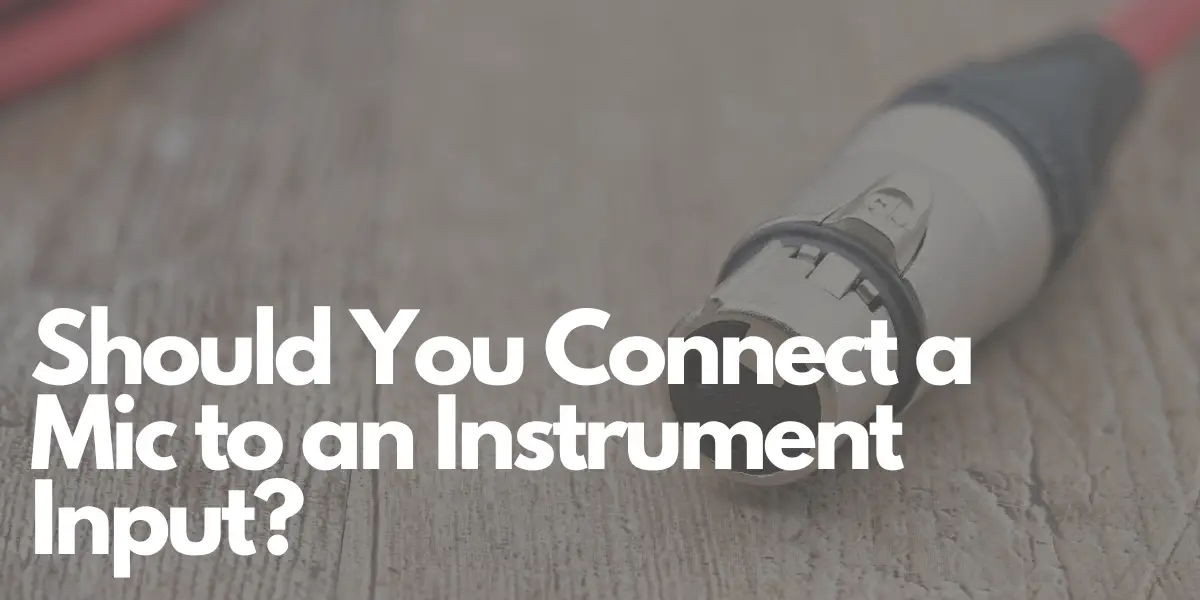When we talk about microphones and instrument inputs, it’s important to understand their basic functionalities and how they differ:
- Microphones: These are devices that transform sound waves from our environment into electrical signals. A crucial aspect to note about microphones is that they usually come with low-impedance outputs. This means that they need an extra boost, or preamplification, to reach a level that’s suitable for recording or amplifying.
- Instrument Inputs: You might hear these being referred to as Hi-Z or line-level inputs. These inputs are tailored for accepting outputs from instruments like the electric guitar. The crucial difference is that they are primed for high-impedance signals and lack the preamplification that microphones need.
The Feasibility of Plugging a Mic into an Instrument Input
Yes, if you’re talking about the physical act, you can connect a microphone to an instrument input. However, this might not be the best idea, and here’s why:
- Impedance Concerns:
- Microphones generally have low-impedance outputs.
- Instrument inputs, on the other hand, are built for high-impedance signals.
- Combining the two can result in an impedance mismatch which can degrade the quality of your sound.
- Signal Strength Issues:
- Microphones generate very subtle signals.
- Instrument inputs are on the lookout for stronger signals.
- Without the right boost or preamplification, the microphone’s output might be too feeble when linked to an instrument input.
- The Missing Preamplification:
- Instrument inputs are missing the necessary preamplification to increase the signal from a microphone to a usable range.
- Without this boost, the sound from the microphone might be almost inaudible.
- Potential for Harm:
- You might inadvertently harm the equipment if you plug a microphone into an instrument input. This is because of the impedance differences and the high voltage levels the instrument input anticipates.
Guidelines and Alternatives for Proper Connections
If you want to ensure your microphone is connected the right way, consider the following suggestions:
- Opt for a Microphone Input: Always go for a dedicated microphone input when you can. These are crafted with the correct impedance and sensitivity settings, and they also come with the necessary preamplification for microphones.
- Consider a Direct Box (DI Box): If you absolutely need to connect your microphone to an instrument input, a DI box might be your best bet. It can adjust the impedance and provide the boost needed to change the microphone signal to fit an instrument input.
- External Preamplification:
- If a DI box isn’t available, another choice might be an external microphone preamplifier.
- This can offer the required boost and impedance adjustments.
- Manage Your Volume Carefully: If you find yourself in a situation where you have to link a microphone directly to an instrument input, be wary of your volume settings. Minimizing gain and keeping the microphone near the sound source can reduce potential complications.
In Summary
It’s technically possible to plug a microphone into an instrument input. However, it’s generally a bad idea because of the mismatch in impedance, the lack of adequate preamplification, and the possibility of causing harm to your equipment. If you’re looking to get the best audio quality, it’s vital to use dedicated microphone inputs or other alternatives like DI boxes and external preamplifiers. These ensure the correct matching and conditioning of signals, leading to clear and high-quality audio outcomes.
Author: Mike P
Hi! My name is Mike! I’ve been an apartment producer/musician for 10+ years. I’ve played in punk bands, released EDM tunes on Beatport and iTunes, and have a semi-successful stock music portfolio. Read more…


